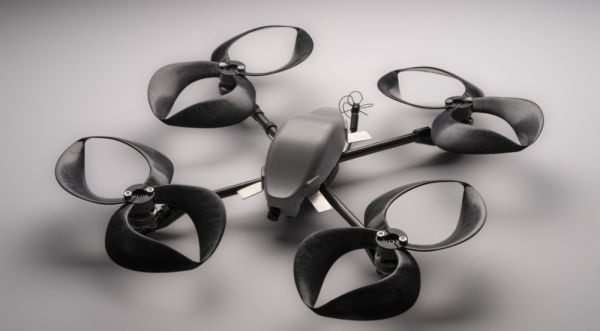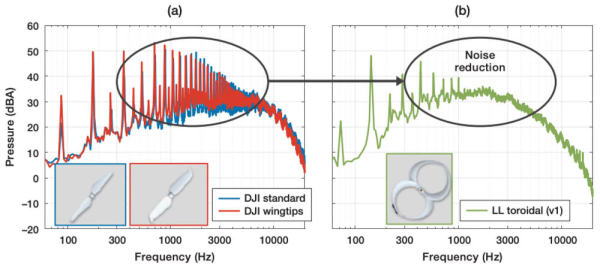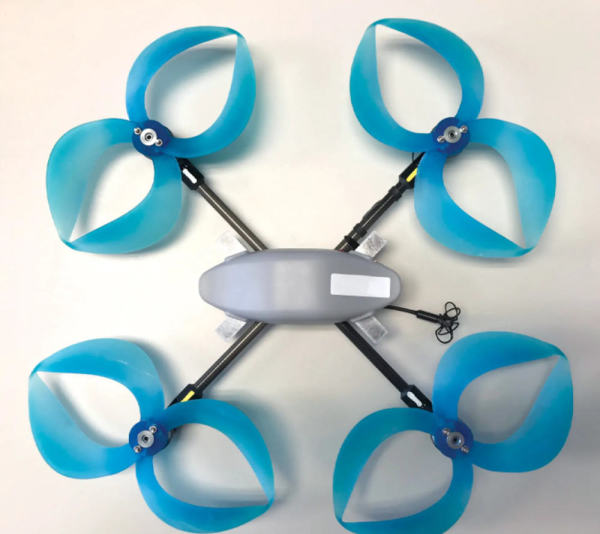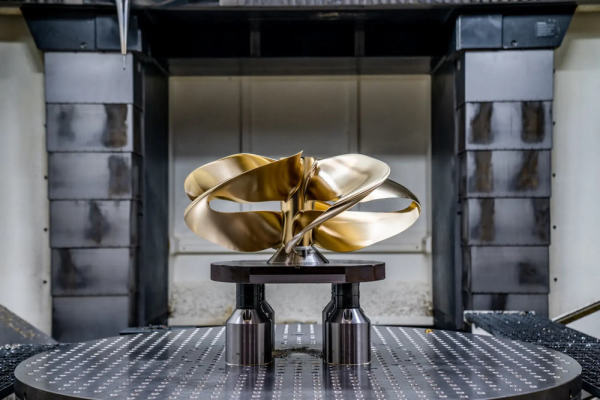[11:43 Fri,3.February 2023 by Thomas Richter] |
Drones are extremely popular as flying cameras and have become an indispensable part of movies and TV documentaries - but their unpleasant buzzing noise when hovering is often very disturbing and makes some recordings impossible. But a quasi-random discovery by MIT researchers now raises hopes that drones could become much quieter in the future.  Drone with toroidal propellers The actual goal of the research was to develop a silent aircraft - made possible by a completely new propulsion technology, a The team explains the protective effect by the closed structure of the rotor (the two blades of the toroidal propeller converge in a loop) which reduces the air resistance caused by the air tunnels (i.e. vortices) created at the blade tips. This results in a lower noise level, which fortunately is not at the expense of performance.  Comparison of the new propellers with DJI&s rotors The toroidal propeller was installed on a DJI commercial drone for testing purposes and  Drone with toroidal propellers. Another advantage over classic rotors relates to the safety aspect: the new loop shape of the rotors not only gives them additional stability, but also reduces the risk of injury if the drone accidentally collides with a person or the risk of damaging itself or other objects in a collision. The new toroidal propeller could represent a small revolution for drone technology, greatly increasing the acceptance of drone missions for various tasks that were previously precluded by the annoying noise. This could include drone photography at close range as well as package deliveries by drone, for example.  Toroidal propeller. Interestingly, the toroidal propeller also promises to be of great benefit in another class of vehicle, namely shipping. Here, however, less in terms of noise reduction than a respectable deutsche Version dieser Seite: Weniger Sirren: Neues Rotorendesign macht Drohnen endlich leiser |





